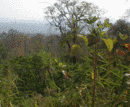Noticias

Science and gender equality are both crucial to a country’s development. In many societies, women often face exclusion in forest-based activities and initiatives resulting from social, economic, and cultural inequalities that limit their ability to fully participate in and benefit from REDD+. It is therefore crucial that deliberate and meaningful efforts are taken to ensure REDD+ actions are inclusive, fair and gender-responsive both in policy and in practice.
An essential step on the path to quality is to recognize and act upon the fact that despite having no innate cognitive differences, women are underrepresented in many scientific and technical fields, particularly...

Imagine a forest that covered half of your entire country. A biodiverse forest which supports thousands of species from giant anteaters to armadillos to jaguars. A forest that is home to diverse peoples and cultures -- and one of world’s last uncontacted tribes.
That forest is in fact a reality in Paraguay, a South American country of seven million people, landlocked between Argentina, Brazil and Bolivia. It is home to much of the Gran Chaco forest that is considered the second largest forested landscape in South America -- second only to the Amazon rainforest. And like other countries which are home to...

“I was born in the forest and I have always lived in my comarca, remote and isolated. My grandfather and my father taught me about the forest, the plants and how to protect them and take care of them. Taking care of the forest comes naturally to me. As the forest needs me to protect it, I need the forest to live. Combining this ancestral knowledge with new technologies has made me a stronger protector of our indigenous forests.” (Rafael Valdespino, Indigenous Technician, Comarca Embera-Wounaan, Panama)
With the largest indigenous population spanning 170 communities, the Mbya Guaranies of Paraguay is an...
Ready to measure: Myanmar is designing and planning its new National Forest Inventory (NFI)
31/01/2020
31/01/2020

Myanmar has one of the highest proportions of forest cover in mainland Southeast Asia. According to the Global Forest Resources Assessment, published by the Food and Agriculture Organization (FAO) in 2015, 44.2% of the country’s territory is covered with forests. A considerable amount of these forests is still relatively intact, hosting exceptional biodiversity, including fishing cats, sun bears, dholes, binturongs, pangolins and more than 1,000 bird species. Moreover, an estimated 70% of the country’s population is living in rural areas and heavily dependent on forests for their basic needs.
To protect the country’s natural wealth, while also fulfilling various national and...

23 January 2020, Rome, Tsukuba, Japan -FAO will bolster the scale and scope of its geospatial monitoring toolkit thanks to collaboration with the Japan Aerospace Exploration Agency (JAXA) that will expand the capacity of FAO's accessible platforms for forestry and land-use assessments.
A three-year agreement signed today will enhance the access of FAO member states and other users to JAXA data sets and more "ground-truthing" evidence through FAO's forest monitoring platforms.
"As deforestation and land-use changes are one of the leading sources of global carbon emissions, satellite-based information has a critical role to play in supporting countries to achieve their commitments on...

